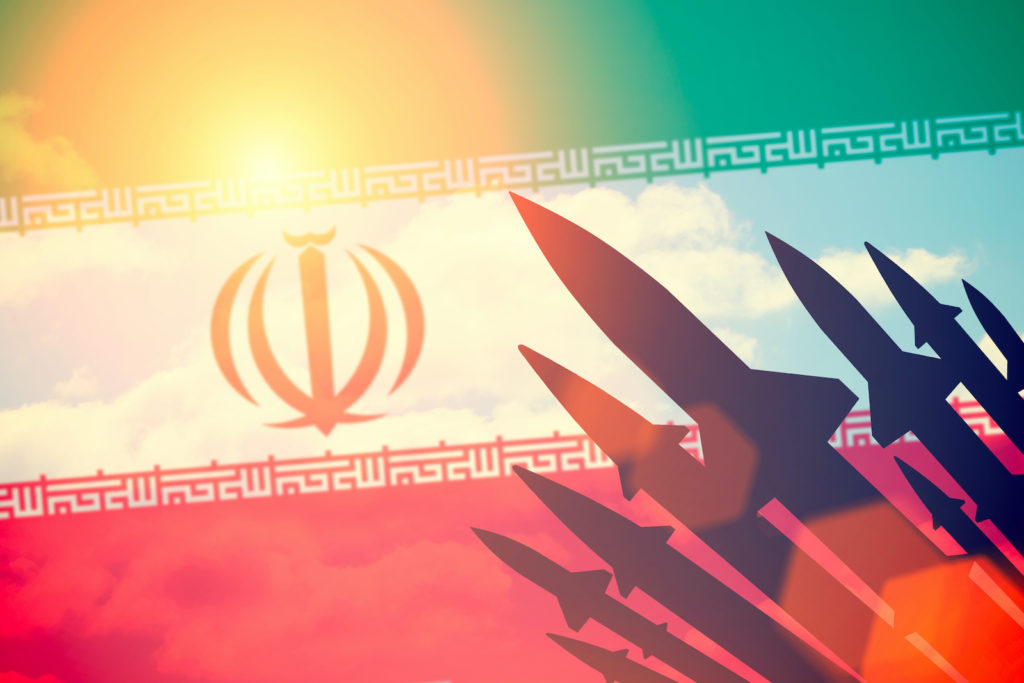IN THE MEDIA
Understanding the “Ring of Fire”
November 6, 2024 | Colin Rubenstein

A ceasefire in the Middle East will not lead to stable diplomatic arrangements
Canberra Times – 6 November 2024
On October 26, Israel carried out its long-expected reprisal for Iran’s October 1 launch of some 200 ballistic missiles against Israel – the largest single ballistic missile attack by one nation against another in history. Israel’s response involved three waves of Israeli jets reportedly first hitting air defence facilities, and then drone and ballistic missile manufacturing and launch sites.
With the successful results of these extensive precision strikes becoming apparent, Jerusalem has reportedly sent messages warning Iran not to retaliate, hoping to prevent further escalation.
Whether or not Teheran heeds these warnings, this will not be the end of the Israel-Iran conflict.
That conflict is rooted in Iran’s regional war strategy against Israel, based on a “Ring of Fire” of proxy armies, which took decades and hundreds of billions of dollars of investment to establish. Ending the current conflict means ending the “Ring of Fire”.
Iran has been open about the “Ring of Fire’s” main purpose – surrounding, slowly overwhelming and ultimately destroying Israel.
There is even a clock in Teheran counting down Israel’s supposed demise.
The current wars in Gaza and Lebanon are very much products of the Iranian plans.
While the “Ring of Fire” strategy was mostly complete by last year, Iran had been delaying its war plans, likely to protect its nuclear weapons program, which is in an advanced yet still vulnerable stage. Completing it would make the “Ring” all but invulnerable.
According to most analysts, on October 7, 2023, Hamas jumped the gun and activated part of the plan on its own initiative, hoping the rest of the axis would be drawn into war.
Hezbollah, a much stronger terror army than Hamas, was caught unprepared and decided against launching a ground attack, despite having the plans and war materiel in place to do so.
Nonetheless, from October 8, Hezbollah began attacking Israel’s north with rockets, missiles, and drones daily, displacing more than 60,000 Israelis. Over time, Iran mobilised the rest of its proxies into the war through missile and drone attacks on Israel, and attacks on merchant shipping.
Then, in April, Iran came out of the shadows and launched 300 drones and missiles against Israel directly. This was followed up with the October 1 attack.
Therefore, Israel had two rude awakenings – not only on October 7, but also afterward as Hezbollah and then gradually other Iranian proxies, including the Houthis, joined in, followed finally by Iran itself. The West, including Australia, needs to accept the reality that an Iranian-triggered regional war isn’t merely a possibility – it has been the reality for the past year.
Meanwhile, calls by the Australian Government and others for immediate ceasefires in Gaza and in Lebanon are premature and short-sighted, as the US Biden Administration now concedes. War should be an option of last resort, but it is simplistic to believe the antidote to an active war is simply to impose a ceasefire without tackling its underlying causes.
Ceasefires existed between Israel, Hamas, and Hezbollah before October 7. They failed to create stability because the Iranian-led forces of “resistance” have no interest in stability, only preparations for the next phase of war.
Calling for ceasefires with such groups and imagining it will lead to the negotiation of stable diplomatic arrangements is a pipe dream. For example, the 2006 Israeli-Hezbollah war ended with one such hopeful diplomatic arrangement – UN Security Council Resolution 1701. It was impressive on paper, but from day one Hezbollah and Iran completely disregarded their obligations, and no international effort was made to enforce compliance. The result has been Hezbollah dominance of Lebanon, inexorably leading to the current conflict, and turning Lebanon into a failed state.
Israel’s highly effective moves in the past few weeks against Hezbollah, Iran’s most important proxy, have severely damaged the “Ring of Fire” plan in a way Teheran never expected. There is now a real chance that Lebanon can be rescued from being a de facto Iranian satellite under Hezbollah’s thumb.
Hamas is on the ropes in Gaza, with all its brigades now dismantled and almost all its leadership dead, culminating in the killing of top leader and October 7 mastermind Yahya Sinwar on October 16. Unless a premature ceasefire allows it to regroup, Hamas can likely be prevented from again turning the enclave into a vast terror base. A more peaceful future for Gazans could then potentially be feasible.
Anyone who cares about regional stability, a negotiated two-state peace, or the welfare of Palestinians and Lebanese should thus desperately want Israel’s increasingly successful war against the Iranian “Ring of Fire” to fully achieve its aims in Gaza, Lebanon and beyond – not end prematurely.
Furthermore, Iran’s naked aggression against Israel should precipitate long-overdue, serious international pressure to force Iran to verifiably end its nearly completed drive to create nuclear weapons, which, if achieved, would destroy any hopes of regional stability or a two-state peace.
Dr Colin Rubenstein is executive director of the Australia/Israel & Jewish Affairs Council
Tags: Gaza, Hamas, Hezbollah, Iran, Israel, Lebanon, Middle East, Palestinians





